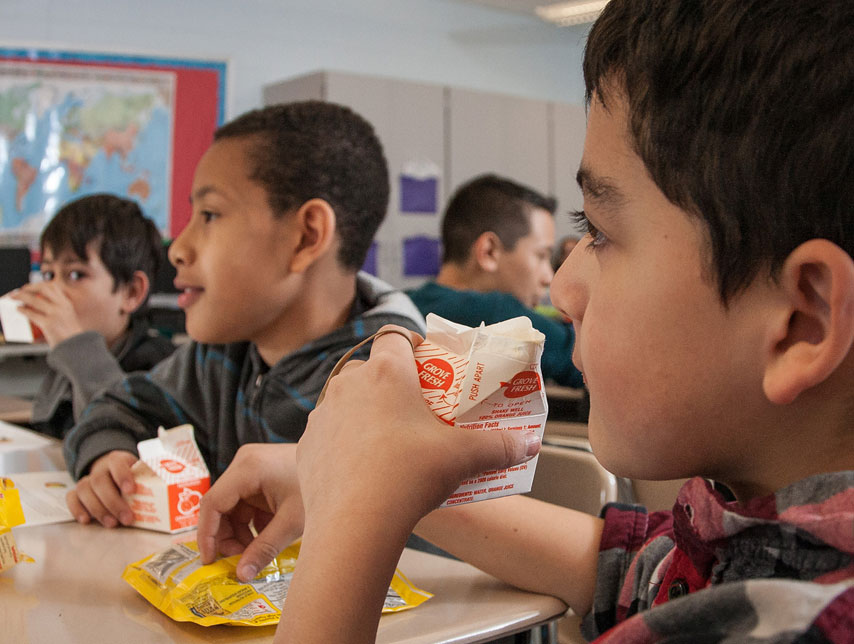FRAC’s Hunger & Poverty in America Page includes:

Hunger Quick Facts for 2023
- Overall: About one in 7 households (13.5 percent) experienced food insecurity, or lack of access to an affordable, nutritious diet. An estimated 47.4 million Americans lived in these households.
- 5.1% of U.S. households (1 in 20) experienced very low food security, a more severe form of food insecurity, where households report regularly skipping meals or reducing intake because they could not afford more food.
- Children: 13.8 million children lived in households that experienced food insecurity, up 3.2 percent from 2022.
- Race and ethnicity: Rates of food insecurity were higher for Black (23.3 percent) and Latinx (21.9 percent) households, both more than double the rate of White non-Latinx households (9.9 percent).
- Rural: A higher portion of households in urban areas (15.9 percent) and rural areas (15.4 percent) experienced food insecurity compared to suburbs (11.7 percent).
- Geography: Households in the Southern region continued to experience higher rates of food insecurity than any other U.S. region, with 14.7 percent of households experiencing food insecurity in 2023.
- The prevalence of food insecurity varied considerably by state, ranging from 7.4 percent in New Hampshire to 18.9 percent in Arkansas (for the three-year period of 2021–2023).
Report: Household Food Security in the United States in 2023
Tables and charts: Statistical Supplement to Household Food Security in the United States in 2023
Updated 9/4/2024
Poverty Quick Facts
- Overall poverty: According to the official poverty rate, 36.8 million people (11.1 percent) lived in poverty in 2023, unchanged from 2022. However, according to the Supplemental Poverty Measure (SPM), which accounts for the cost of living and the receipt of social safety net programs, the poverty rate increased by 0.5%, from 40.9 million people (12.4 percent) in 2022 to 42.8 million people (12.9 percent) in 2023.
- Income: After accounting for inflation, real median household income increased by 4 percent, from $74,580 in 2022 to $80,610 in 2023.
- Context: Normally, the SPM is higher than the official poverty rate. In 2020 and 2021, the SPM was lower than the official poverty rate, reflecting the impact of expansions to federal assistance programs during the pandemic. Conversely, in 2022 and 2023, the higher value of the SPM reflects the end of pandemic-era assistance.
Poverty rates using the comprehensive Supplemental Poverty Measure for specific groups:
- Children: 1 in 7 (13.7 percent or 9.9 million) children lived in poverty in 2023, an increase from 1 in 8 (12.4 percent or 8.9 million) children in 2022.
- Race/Ethnicity: Poverty was notably higher in 2023 for Black individuals (18.5 percent), Latinx individuals (20.9 percent), and Native American and Alaska Native individuals (19 percent) compared to White, non-Hispanic individuals, whose poverty rate fell to 8.8 percent. Higher rates of poverty in Black, Latinx and Native communities are due to systemic racism that results in neighborhood disinvestment, occupational segregation, wage discrimination, etc.
- Geography: Nationally, the Western region had the highest average poverty rate (15 percent), followed by the South (13.6 percent), the Northeast region (11.9 percent) and the Midwest region (9.8 percent).
- Role of the Federal Nutrition Programs: The federal nutrition programs lifted more people out of poverty in 2022 compared to 2021 and 2020. In 2023, SNAP lifted 3.4 million people out of poverty, 1.3 million of whom were children, school meals lifted 1.2 million people out of poverty, 651,000 of which were children, and WIC lifted 203,000 people out of poverty, 102,000 of whom were children.
On September 10, 2024, the U.S. Census Bureau released its latest reports Poverty in the United States: 2023; Income in the United States: 2023; and Health Insurance Coverage in the United States: 2023.

Census Data Reveals Surge in Poverty
On September 12, 2023, the Census released data on poverty in the U.S. for 2022. We learned that, from 2021 to 2022, the Supplemental Poverty Measure (SPM) increased by 60 percent overall and more than doubled among children. This significant increase in poverty is likely due to the end of pandemic-era programs and is one of many indicators that hunger is also on the rise. Learn more in this FRAC Chat blog.
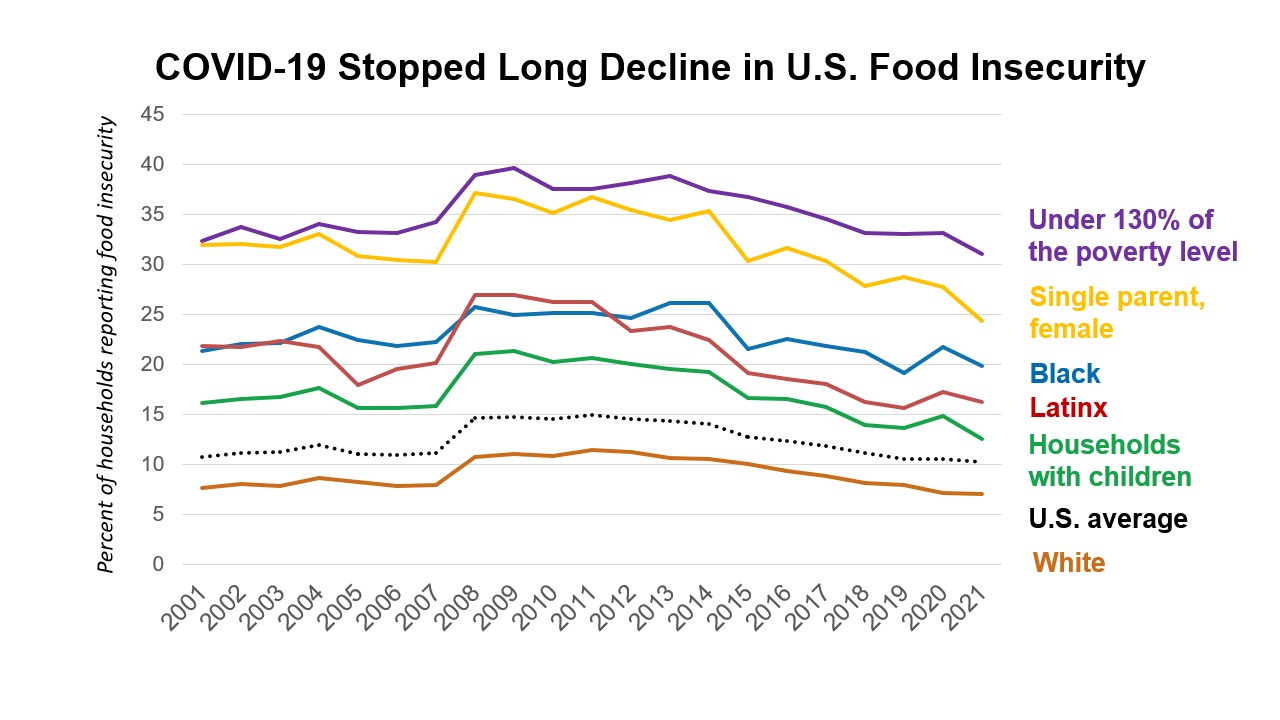
Pandemic Disrupted Decade-Long Decline in Food Insecurity in 2020
Food insecurity rates plateaued over the last three years, disrupting an almost decade-long decline in food insecurity since the Great Recession. Yet the fact that food insecurity did not increase in 2020 and 2021 is a testament to the magnitude of the federal pandemic response.
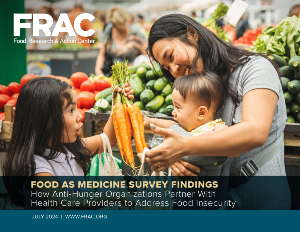
Food as Medicine Survey Findings: How Anti-Hunger Organizations Partner With Health Care Providers to Address Food Insecurity
Food as Medicine is more than medically-tailored meals. Learn how a significant number of anti-hunger organizations are partnering with health care providers to connect patients to federal nutrition programs in FRAC’s new report, Food as Medicine Survey Findings: How Anti-Hunger Organizations Partner With Health Care Providers to Address Food Insecurity.
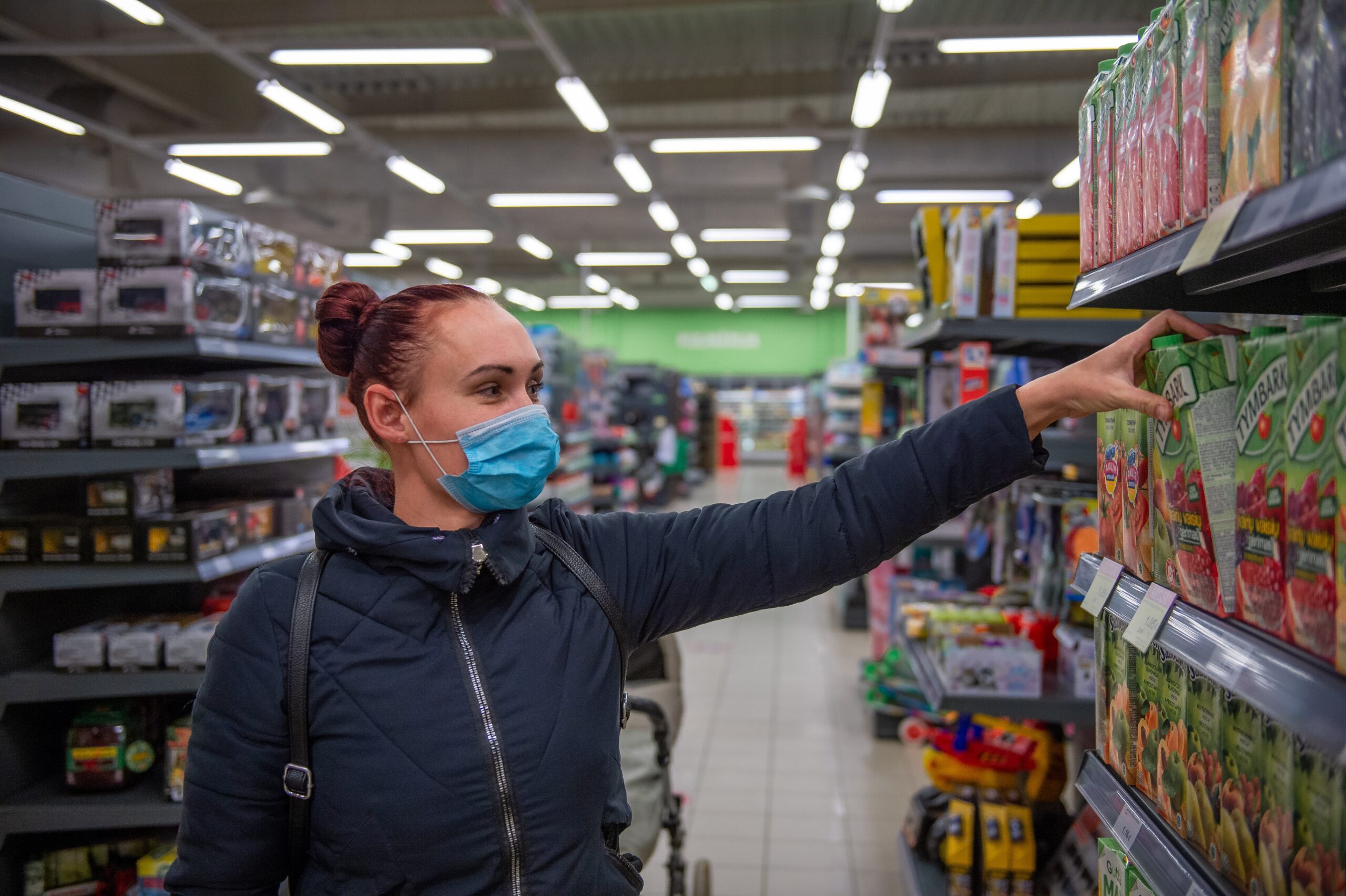
Hunger, Poverty, and Health Disparities During COVID-19 and the Federal Nutrition Programs’ Role in an Equitable Recovery
The health and economic crises brought on by the COVID-19 pandemic has made the federal nutrition programs more important than ever. FRAC’s latest report is a review of new research on how the federal nutrition programs reduce hunger, poverty, and health, including their efficacy during the pandemic, and concludes with policy recommendations to leverage the federal nutrition programs for a robust and equitable recovery.

Food Over Fear: Overcoming Barriers to Connect Latinx Immigrant Families to Federal Nutrition and Food Programs
Read FRAC and National Immigration Law Center’s report which sheds light on why many immigrant families are forgoing vital assistance from federal nutrition and food programs and lifts up recommendations aimed at ensuring that all families and individuals, regardless of immigration status, are nourished and healthy.
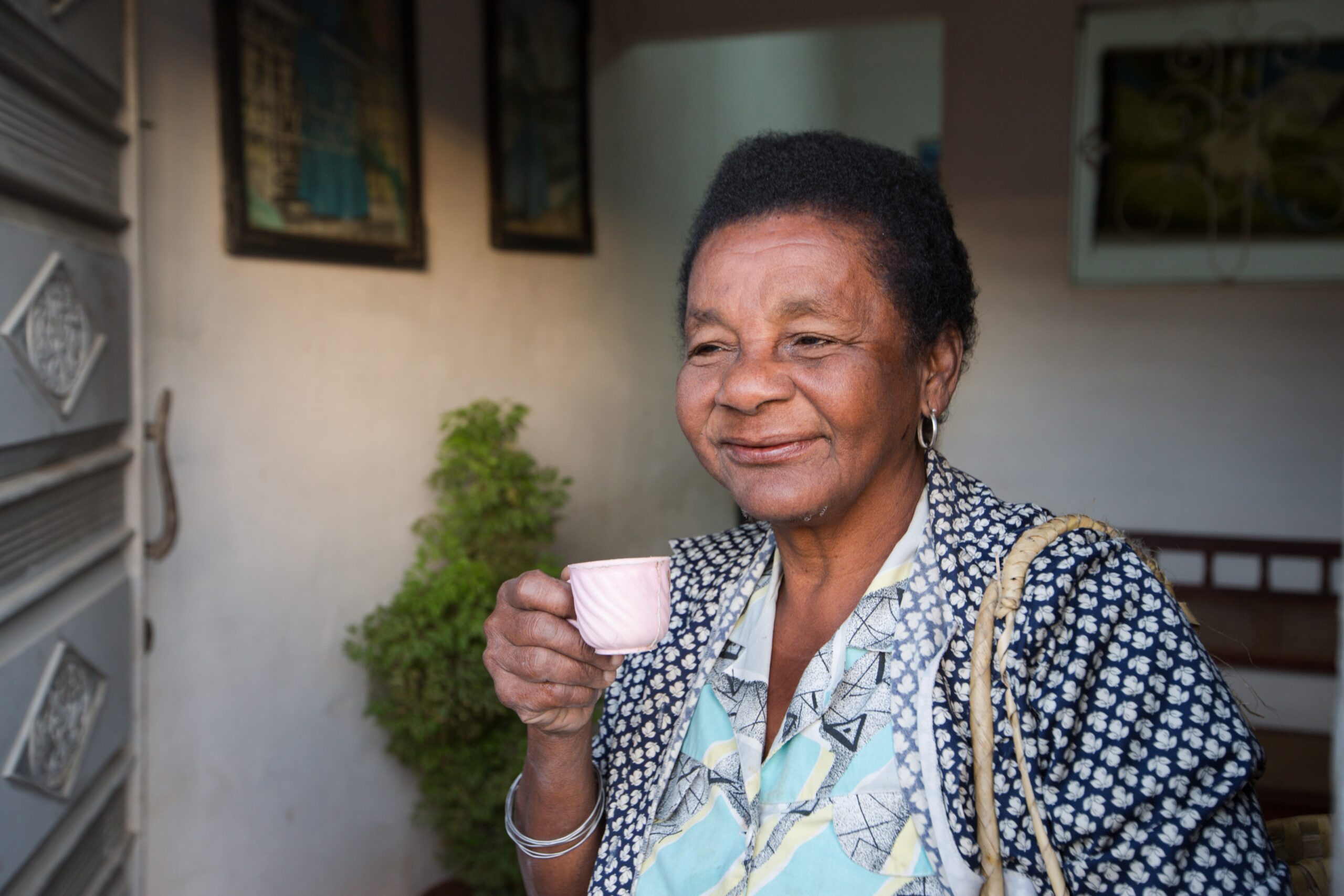
Fact Sheets on the Impact of COVID-19 on Special Populations
COVID-19 has created disparate impacts on diverse populations, including Black communities; Latinx communities; American Indian and Alaska Native (AIAN) communities; Native Hawaiian and Pacific Islander (NHPI) communities; young adults; older adults; women; households with low income; households with low education attainment; and rural communities.
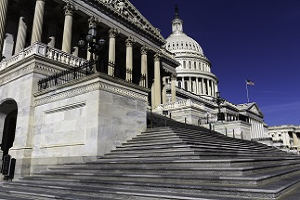
Legislative Action Center
Find out how you can get involved in the fight to eradicate hunger at FRAC’s Legislative Action Center.
Who is impacted by hunger?

Veterans Have Fought for Our Country — They Shouldn’t Have to Fight Against Hunger
Read the blog post
Report Finds that More Americans, Particularly Children, are at Risk of Hunger
Read more
Screen and Intervene: Addressing Food Insecurity Among Older Adults
New online course from FRAC and AARP
Addressing Food Insecurity: A Toolkit for Pediatricians
Find out more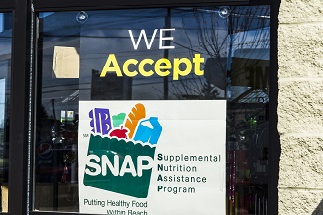
Find Solutions to Hunger in FRAC's A Plan of Action To End Hunger in America
Read more
Nearly 9 million people age 50+ are threatened by hunger every day.
Read more
Despite an improving economy, millions of families still struggle with hunger in every community, and every state.
Read more
Poverty, hunger, and food insecurity disproportionately affect Americans who have communicative, mental, or physical disabilities.
Read more
Certain jobless adults without dependents have time limits on their receipt of SNAP benefits despite their willingness to work.
Download the infographic
Solutions Exist to End Hunger & Poverty
Hunger in America is a serious issue that requires a serious response. When there is talk about improving opportunities for all Americans through education, health care, and the economy, addressing hunger and poverty must be a part of that conversation.
Education
The last thing on a hungry child’s mind is learning. Children are better equipped to learn when they have the nutrition they need. Yet too many low-income children who are eligible for free and reduced-price meals are not accessing them. More must be done to increase participation in school meals, summers meals, afterschool meals, and child care meals.Health care
Research shows that food insecurity is linked with costly chronic diseases and unfavorable outcomes. According to the Root Cause Coalition, the annual costs of hunger to the U.S. health care system are $130.5 billion. Greater investments in nutrition programs would go a long way in addressing obesity and other negative health outcomes faced by low-income Americans.Economy
SNAP serves as the first line of defense against hunger for millions of Americans. The program also stimulates the economy. Recent census data shows that SNAP lifted 3.6 million people out of poverty in 2016. In addition, USDA research shows that each $5 of SNAP benefits generates nearly twice that in economic activity. Federal nutrition programs can’t do it alone. There must be a comprehensive approach.Recent Publications & Data
See More Resources- Report
Research on the diets of SNAP recipients is complex and prone to numerous methodological challenges that can result in misleading interpretations. Learn more in FRAC’s research brief.
Read the research brief - Toolkit
Explore FRAC’s social media toolkit to find social media graphics and messages to raise awareness and protect SNAP and school meals from any cuts. Download the social media graphics here.
Explore the toolkit - Fact Sheet
Discover state-level impacts of SNAP in FRAC’s Protect SNAP to Reduce Hunger and Strengthen Local Economies fact sheets.
Read - Advocacy Tool
SNAP matters. Learn why in FRAC’s new SNAP Matters two-pager, which features quotes from SNAP recipients on the federal nutrition program’s value and importance. Learn why proposed cuts to SNAP would be disastrous for people with low incomes by exploring the testimonials of SNAP participants.
Read the two-pager
